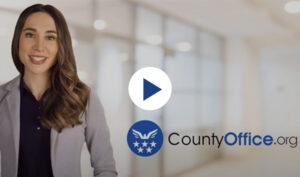Staying Tech-Smart
By now, you know that Texas and Arizona have adopted the ABA’s comments regarding maintaining technological competency. This requires lawyers to, among other things, “keep abreast of changes in the law and its practice, including the benefits and risks associated with relevant technology.” [emphasis added].
In November 2024, the Supreme Court of Arizona’s Steering Committee on Artificial Intelligence and the Courts issued an opinion detailing ethical best practices for using AI, which cites the ABA Opinion issued in June 2024. The ABA opinion was discussed in a prior issue of I Wood Read That; a link to the ABA opinion is below.
In February 2025, the Texas Supreme Court’s Professional Ethics Committee issued Opinion No. 705 regarding the use of generative AI. The opinion was written in response to a request from the State Bar of Texas’s Taskforce on Responsible AI in the Law to provide a high-level review of potential ethical issues arising with lawyers’ use of generative AI.
The Texas and Arizona opinions are substantially similar, which makes sense since they were modeled after the ABA’s Opinion. In summary, Arizona and Texas lawyers must be aware of potential ethical issues, competent in using the tool, maintain client confidentiality, verify results, and bill honestly. Both opinions also suggest getting the client’s informed consent to use AI and vary on whether and to what extent the use of AI must be disclosed to the Court and opposing counsel.
In addition to these ethical considerations, we need to be mindful about this tool’s potential misuse, including increasingly realistic scams. I recently attended a CLE offered by my malpractice carrier and wanted to share some of the AI warnings they shared.

AI Fraud Alerts!
- The Friday Afternoon Fraud
This scam typically occurs with a new client. The potential new client usually poses as a legitimate business and often uses AI to create fake documents. The PNC desperately wants to hire you for some large legal matter (and/or series of matters), signs your Engagement Letter, and willingly pays your retainer.
An early red flag comes when the client pays more than the retainer request, usually citing the “large volume of work” the client will send you. Shortly after the retainer is credited to your bank account but before it is received in your bank account, the new client has an emergency (usually on a Friday afternoon) and demands that you refund all or part of the retainer. The refund request is urgent, time-sensitive, and has disastrous consequences for the new client if you can’t meet the deadline. To appease the new client, you refund all or some of the retainer, and you are happy you could help your new client out of this bind.
Several days later, you are notified that your new client’s huge retainer “bounced” because the sending bank account has insufficient funds or is fake. You reach out to the client who is now MIA with money you “refunded” from your bank account.
The fix? Include a clause in your Engagement Letter that states retainer refund requests take a certain number of days to process (depending on your banking institution) or are processed after certain conditions are met.
2. The Wrongful Wire Transfer
Some criminals leverage AI to intercept emails and alter funding requests, usually by wire transfer. To spot a fake wire transfer, look for red flags like unexpected requests, urgent situations, grammatical errors, requests for bank account details, and insistence on wire transfers as the only payment method. Always verify instructions directly with the beneficiary using a known contact method and don’t rush into sending money.
The Fix? Include a clause in your Engagement Letter that states, “We will never send you wire transfer instructions by email. Please verify any future instructions by calling [Name] at [number] and referencing this Client Code Word/Number [insert here].”
Watch this video to learn how to avoid wire transfer scams:
For more information on the use of AI in the legal profession, check out these resources:
- American Bar Association (ABA):
- The ABA regularly publishes articles and reports on the impact and use of AI in the legal field
- Stanford Law School’s CodeX – The Stanford Center for Legal Informatics:
- Focuses on how technology, including AI, can improve the legal system
- Provides reports and resources on the implementation of AI in contract review and other legal processes
- A blog that covers news and developments in AI and legal technology


